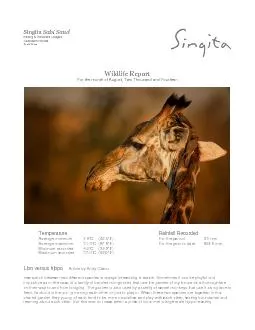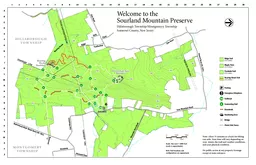PDF-Ebony & Boulders Lodges
Author : min-jolicoeur | Published Date : 2017-02-25
Singita Sabi Sand Castleton House South Africa Wildlife Report For the month of August Two Thousand and Fourteen Temperature Rainfall Recorded Average minimum 58 x02DAC
Presentation Embed Code
Download Presentation
Download Presentation The PPT/PDF document "Ebony & Boulders Lodges" is the property of its rightful owner. Permission is granted to download and print the materials on this website for personal, non-commercial use only, and to display it on your personal computer provided you do not modify the materials and that you retain all copyright notices contained in the materials. By downloading content from our website, you accept the terms of this agreement.
Ebony & Boulders Lodges: Transcript
Download Rules Of Document
"Ebony & Boulders Lodges"The content belongs to its owner. You may download and print it for personal use, without modification, and keep all copyright notices. By downloading, you agree to these terms.
Related Documents













